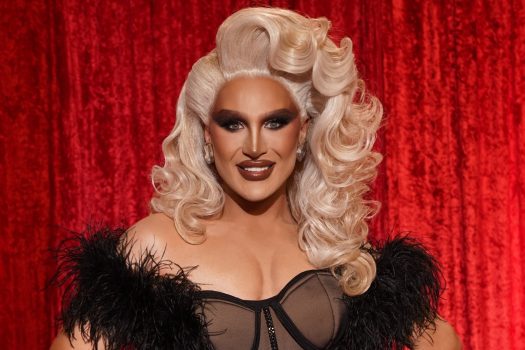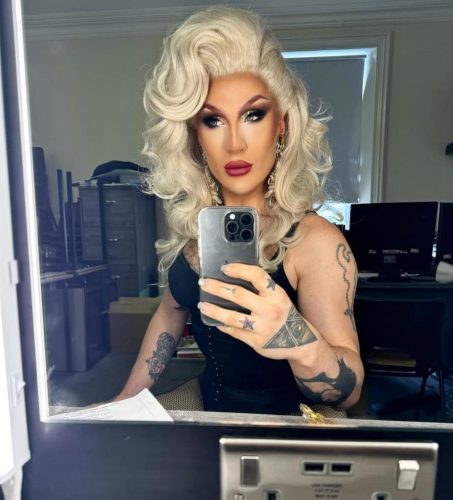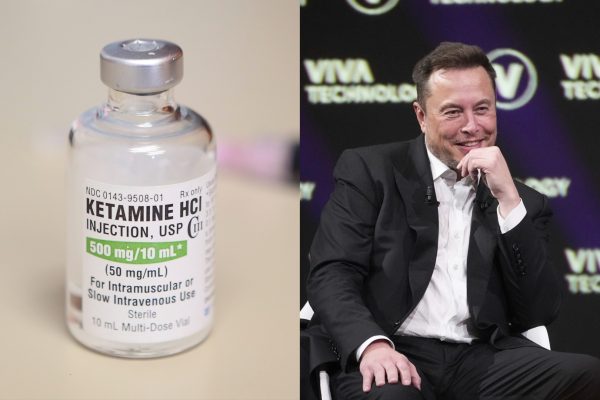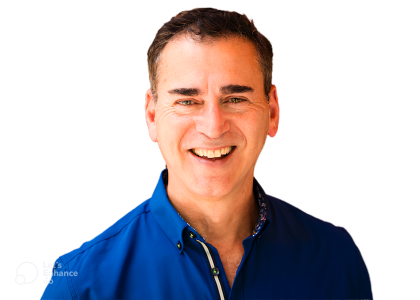
First Matthew Perry, Now The Vivienne. The Ketamine Panic Is Here
By Michael Alvear, Health Author & Independent Researcher
My research is published on these scholarly platforms:
Last Updated:
The headlines are brutal: “The Vivienne’s Parents Blame Ketamine for Heart Attack Death.”
The panic spreads fast. News anchors furrow their brows. Op-eds sound alarms. Social media explodes with armchair toxicologists eager to diagnose a cause of death they don’t understand.
For most people, the headline is all they need to see. Ketamine killed a celebrity. Case closed. The outrage machine revs up, ready to put another drug on trial.
But wait.
We’ve seen this before. We saw it with Matthew Perry. We saw it with Prince. We saw it with Michael Jackson. A prescription drug is blamed for a celebrity’s overdose, and suddenly, the drug—not the misuse—is the villain. The fact that countless people use the same medication safely, under medical supervision, gets buried under the weight of the scandal.
The same is happening now.
What matters isn’t just that The Vivienne had ketamine in their system. It’s how much? Where did it come from? Was it medically supervised, or was it another case of reckless, unmonitored use?
These are the questions the headlines won’t ask. Because they don’t fit the easy narrative.
But if we don’t ask them, the consequences could be devastating—not just for ketamine therapy, but for every breakthrough psychedelic treatment that’s finally getting a chance to help people.

This isn’t just a story about one person’s tragic death. It’s about how celebrity drug misuse—and the public’s knee-jerk reaction to it—threatens to destroy treatments that are saving lives.
Medical Ketamine vs. The Kind That Kills
Ketamine is either a life-saving treatment or a reckless party drug—depending on how it’s used.
But the media doesn’t care about nuance.
To them, ketamine killed The Vivienne. Full stop. Never mind that thousands of people—including those with the most severe, treatment-resistant depression—use ketamine safely under medical supervision. Never mind that it’s one of the most powerful, fast-acting antidepressants we’ve ever seen.
No, The Vivienne’s death (James Lee Williams)will be used to fuel a narrative that has nothing to do with medical reality.
So let’s set the record straight.
Therapeutic Ketamine: A Controlled, Medical Treatment
In a clinical setting, ketamine is carefully measured and administered by trained professionals. It’s given through IV infusions, injections, nasal spray (Spravato), or dissolvable tablets. Each dose is precisely calculated based on body weight and medical history. Patients are monitored. They don’t just take the drug and walk out the door.
At these controlled doses, ketamine doesn’t kill people. It saves them. It lifts them out of the kind of depression where every day feels like a slow-motion suicide.
Recreational Ketamine: A Chemical Free-for-All
Then there’s the other ketamine—the one people get from shady clinics, online dealers, and party suppliers. This is the kind that turns up in celebrity overdoses.
Recreational ketamine is unpredictable.
- The dose is a guessing game.
- The purity is questionable.
- The setting is anything but controlled.
At best, it’s a reckless high. At worst, it’s a fatal mistake.

Matthew Perry Was the Warning
We’ve already seen what happens when ketamine is used irresponsibly. Matthew Perry was undergoing real ketamine therapy at a licensed clinic. But when his doctors refused to increase his dose, he went looking elsewhere.
The ketamine that killed him wasn’t prescribed by a doctor. It was black-market, unsupervised, and in catastrophic quantities—about 1,376% more than a standard therapeutic dose.
The difference between Perry’s ketamine therapy and the ketamine that killed him? One was medical. The other was reckless.
Which Kind Did The Vivienne Take?
That’s the question no one is asking. If The Vivienne was using ketamine responsibly—through a licensed medical provider—then this would be one of the rarest deaths on record. But if they were self-medicating, taking unknown doses from unknown sources? Then it’s not ketamine’s fault.
It’s misuse’s fault.
But that’s not the story the media wants to tell.
How Much Ketamine Was in The Vivienne’s System?
The official cause of death is a heart attack, but that doesn’t answer the most important question: how much ketamine was in The Vivienne’s system?
In a medical setting, the dosage is carefully measured—around 50 to 75 milligrams per session, depending on body weight. That’s what’s used to treat depression. It’s enough to create dissociation, to unlock buried trauma, to give people trapped in darkness a way out. But it’s not enough to stop a heart.
Matthew Perry’s overdose showed what happens when someone moves from medical use to something else entirely. His autopsy found 1,078 milligrams of ketamine in his system—an amount consistent with general anesthesia. The ketamine that helped him was measured in milligrams. The ketamine that killed him was measured in grams.
The Vivienne’s family blames ketamine for the heart attack, but unless they’re claiming that medically supervised doses routinely cause cardiac failure, they’re missing the real issue. The amount matters. Where it came from matters. A controlled clinical dose doesn’t trigger a massive cardiac event. A reckless, street-level dose can.
So where did The Vivienne’s ketamine come from?
A licensed provider wouldn’t prescribe enough to stop a heart. That means either the drug was taken in dangerously high doses, or it wasn’t pure ketamine at all. A mix of substances. A contaminated supply. A combination of ketamine and stimulants, like cocaine or meth, amplifying the strain on the heart. These are possibilities that demand answers.
But that’s not the conversation we’re having. The press won’t ask where it came from. They won’t ask how much was taken. They won’t distinguish between a therapeutic treatment and a reckless overdose. They’ll just say ketamine kills, and move on to the next outrage cycle.
The Rising Danger of Celebrity Drug Culture
The Vivienne’s death isn’t just a tragedy—it’s a pattern. A-list overdoses have become a genre of their own, with the same cycle playing out over and over. A celebrity dies under suspicious circumstances. The drug gets blamed. The conversation turns to bans and crackdowns instead of the obvious problem: reckless, unsupervised use.
Matthew Perry Was the Warning, But No One Listened
Perry was getting ketamine therapy from real doctors. But when they refused to increase his dose, he went looking for more. The amount in his system at death wasn’t a medical miscalculation. It was a direct result of self-medicating.
The Vivienne’s case could be another example. If this was prescribed treatment, it would be one of the only known cases of a standard therapeutic dose triggering a fatal heart attack. If it wasn’t, then we’re looking at another cautionary tale—one where ketamine isn’t the villain, but the way it was used is.

Elon Musk and the “Normalization” of Casual Use
Then there’s Elon Musk, who talks about ketamine like it’s a supplement he takes “as needed.” He’s not describing a carefully supervised medical treatment. He’s describing the kind of self-dosing that gets people killed. And because he’s Elon Musk, that message spreads.
Celebrity behavior shapes public perception. When Musk treats ketamine like a Tylenol, people assume that’s how it works. When The Vivienne dies and ketamine is blamed, people assume it’s too dangerous to use. Both narratives are wrong—but they’re the ones that stick.
The New Celebrity Drug Obsession
Psychedelics are the latest Hollywood trend. Psilocybin retreats in Malibu. Ayahuasca ceremonies in the desert. MDMA therapy for trauma. The same celebrities who were popping Oxy in the 2000s are now chasing enlightenment through substances that, in the right hands, are life-changing.
In the wrong hands, they’re a disaster waiting to happen.
When a celebrity takes too much and dies, the conversation won’t be about how they got it, how much they took, or whether they were following medical guidelines. It’ll be about the drug itself. The Vivienne’s death is a preview of what’s coming.
Ketamine. Psilocybin. MDMA. They’re all in the crosshairs now.
Why This Panic Could Kill a Life-Saving Treatment
Every time a celebrity dies from drug misuse, the same thing happens. The public doesn’t blame the overdose, the self-medicating, or the reckless use. They blame the drug. And then the crackdown begins.
For the first time in decades, real progress is being made. Ketamine therapy has been changing lives. MDMA is on the verge of FDA approval for PTSD. Psilocybin is showing promise for depression. These treatments aren’t some fringe experiment anymore—they’re the future of mental health care.
But that future is hanging by a thread.
One moral panic, one overreaction, one poorly written law, and it could all be undone. If politicians use The Vivienne’s death as an excuse to restrict ketamine therapy, they won’t just be shutting down reckless users. They’ll be cutting off the people who actually need it—those for whom traditional treatments have failed, those who are barely hanging on.
We’ve Seen This Before—And It Set Back Science for Decades
In the 1960s, psychedelic research was booming. Studies showed promise for LSD, psilocybin, and MDMA in treating depression, addiction, and trauma. But then came the backlash. The war on drugs. The moral panic about hippies and bad trips. By the time the dust settled, psychedelics weren’t just stigmatized—they were illegal.
The research stopped. The treatments disappeared. Millions suffered because politicians would rather ban a drug than regulate its use.
It took 50 years to undo that damage. Now, history is threatening to repeat itself.
Ketamine Clinics Are Not the Problem
The media will paint this as a ketamine crisis. But the crisis isn’t happening in medical clinics. It’s happening in hotel rooms, private parties, and black-market supply chains.
Licensed providers aren’t handing out massive, heart-stopping doses. The people prescribing ketamine in depression clinics are following strict protocols. They’re helping patients climb out of suicidal despair—not pushing them toward cardiac arrest.
If ketamine therapy gets restricted, it won’t stop celebrities from getting it. The people with money and access will always find a way. The ones who will suffer are the everyday patients who had finally found something that worked.
The Real Threat Isn’t the Drug—It’s the Reaction to It
The biggest danger isn’t ketamine. It’s what happens next. If politicians and regulators respond to The Vivienne’s death the way they responded to Matthew Perry’s, the fallout could be catastrophic.
Fewer clinics. Stricter regulations. Higher costs. More roadblocks for people who are already struggling to access care.
And most devastating of all? More people trapped in treatment-resistant depression, left with nothing but a list of failed medications and a growing sense of despair.
If we’ve learned anything from celebrity overdoses, it’s this: the way a drug is used matters more than the drug itself.
Ketamine Didn’t Kill The Vivienne—Misuse Did
If The Vivienne had been under medical supervision, taking prescribed doses from a licensed provider, this wouldn’t have happened. A medically administered ketamine session doesn’t trigger heart attacks. It doesn’t leave people unconscious in bathtubs. It doesn’t cause the kind of overdose that turns into a headline.
The dose matters. The setting matters. The source matters. The Vivienne’s death wasn’t a failure of ketamine—it was a failure of safe, controlled use.
The Media Will Get This Wrong. The Public Will Pay the Price.
The headlines won’t say The Vivienne misused ketamine. They’ll say ketamine kills. They won’t mention how thousands of people are using it safely to climb out of the depths of depression. They won’t highlight the difference between medical treatment and reckless drug use.
Instead, they’ll feed the fear. And that fear will make its way into policy.
The more the media stokes panic, the more pressure regulators will feel to act. Not on the underground suppliers. Not on the reckless enablers. But on the very people who are trying to help—therapists, doctors, and clinics that have been using ketamine responsibly to treat severe depression.
What Happens Next Could Set Mental Health Care Back by Decades
Ketamine is already under scrutiny. Psychedelics like psilocybin and MDMA are inching toward FDA approval but remain politically vulnerable. One celebrity overdose, one viral media storm, and everything that’s been built over the past decade could come crashing down.
If that happens, the people who will suffer the most won’t be the rich and famous. It’ll be the people who were finally starting to believe they had a way out. The ones who had lost faith in antidepressants. The ones who had exhausted every option. The ones who found hope in a treatment that worked when nothing else did.
The Vivienne’s death is a tragedy. But the biggest tragedy of all would be letting it take down a life-saving treatment in the process.


 Will Musk Do To Ketamine What He Did To Tesla?
Will Musk Do To Ketamine What He Did To Tesla?
Leave a Reply